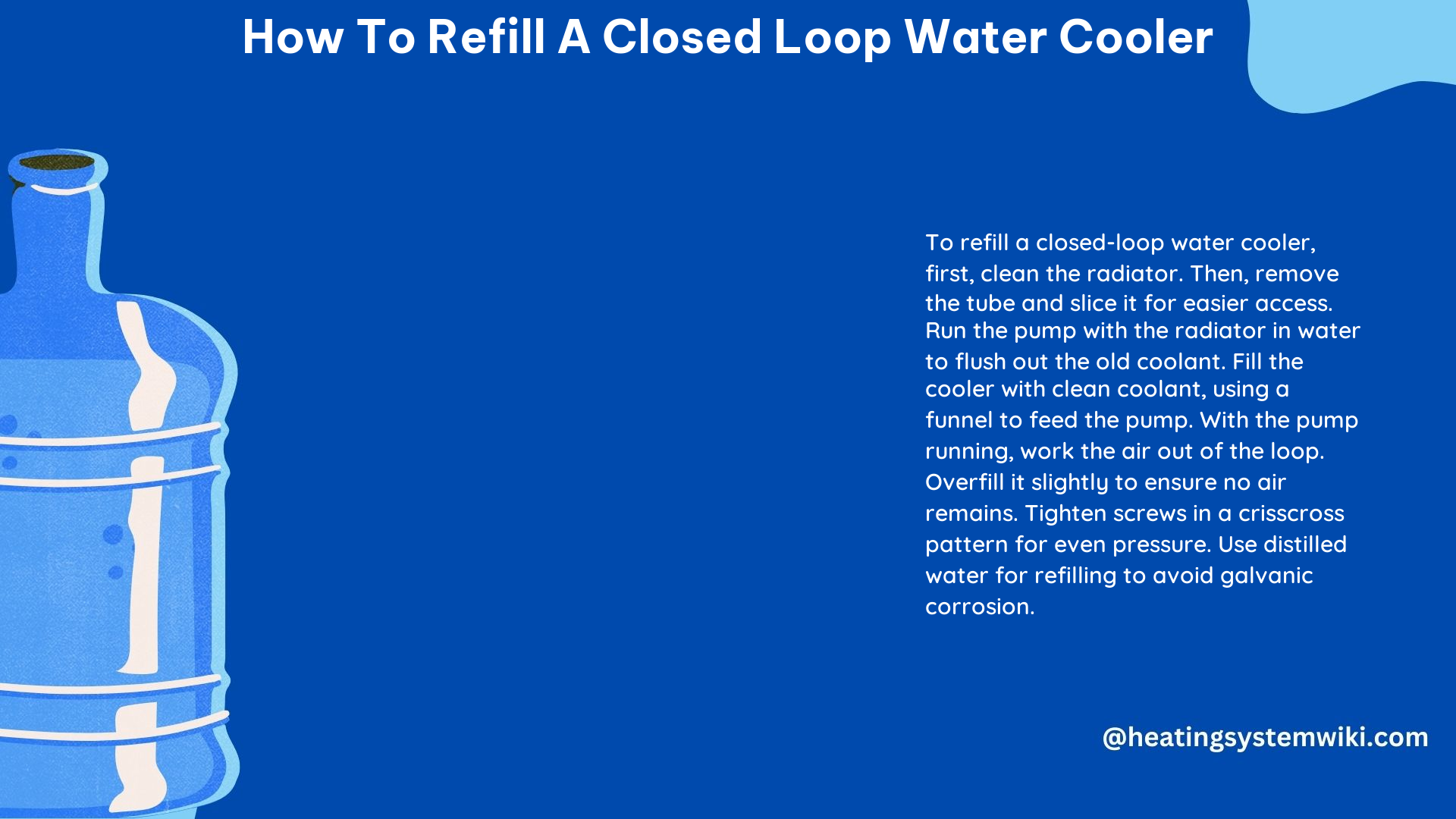Maintaining the optimal performance of a closed-loop water cooler is crucial for ensuring the longevity and efficiency of your computer’s cooling system. Over time, the coolant in the system may become contaminated or depleted, requiring a refill. This comprehensive guide will walk you through the step-by-step process of refilling a closed-loop water cooler, providing you with the technical details and best practices to ensure a successful and hassle-free experience.
Preparing the Closed-Loop Water Cooler for Refilling
-
Cleaning the Radiator: Before refilling the cooler, it is essential to clean the radiator thoroughly. This step helps remove any dust, debris, or contaminants that may have accumulated over time, which can impede the cooling efficiency of the system. Use a soft-bristled brush or a can of compressed air to gently clean the radiator fins, ensuring they are free of any obstructions.
-
Removing the Tubing: Detaching the tubing from the radiator can make the refilling process easier. This step is optional, but it can provide better access to the cooler’s components and facilitate the flushing of the old coolant. If you choose to remove the tubing, be careful not to damage the connections and ensure that you can properly reattach them later.
-
Flushing the Old Coolant: To remove any impurities or contaminants that may have built up in the system, it is recommended to flush the old coolant. This can be done by running the pump with the radiator submerged in distilled water. Ensure that the water is clean and free of any debris or particles that could potentially clog the system.
Refilling the Closed-Loop Water Cooler

-
Selecting the Appropriate Coolant: When refilling the closed-loop water cooler, it is crucial to use a high-quality coolant that is specifically designed for water cooling systems. Avoid using regular antifreeze or other automotive coolants, as they may not be compatible with the materials used in your closed-loop system and could potentially cause damage. Look for a coolant that is formulated to prevent corrosion, algae growth, and other issues that can arise in water cooling systems.
-
Filling the Cooler: Using a clean funnel, carefully pour the new coolant into the cooler’s reservoir. Pay close attention to the coolant level and fill the system until it reaches the recommended level, as specified by the manufacturer. Overfilling the cooler can lead to leaks and other problems, so it is essential to follow the recommended fill level.
-
Removing Air Bubbles: Air bubbles trapped in the system can negatively impact the cooling performance and potentially cause damage to the pump. With the pump running, gently tilt and move the radiator to help work out any air bubbles that may have formed. You can also use a syringe or other tool to carefully remove any remaining air pockets.
Technical Specifications and Considerations
When refilling a closed-loop water cooler, it is important to consider the following technical specifications:
-
Pressure Rating: The pressure rating of the cooler should be within the recommended range for your system. Exceeding the maximum pressure can lead to leaks or even component failure.
-
Flow Rate: The flow rate of the cooler should be sufficient to effectively cool your system. A higher flow rate generally results in better cooling performance, but it is important to ensure that the pump can handle the required flow without causing excessive noise or vibration.
-
Coolant Capacity: The coolant capacity of the closed-loop water cooler will determine the amount of coolant required to fill the system. Refer to the manufacturer’s specifications to ensure that you have the correct volume of coolant on hand.
-
Compatibility: Make sure that the coolant you choose is compatible with the materials used in your closed-loop water cooling system, including the pump, radiator, and any other components. Using an incompatible coolant can lead to corrosion, scaling, or other issues that can compromise the system’s performance and longevity.
By following the steps outlined in this guide and paying close attention to the technical specifications of your closed-loop water cooler, you can ensure a successful and hassle-free refilling process, keeping your computer’s cooling system running at its best.
